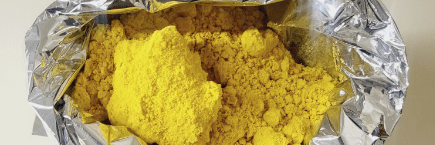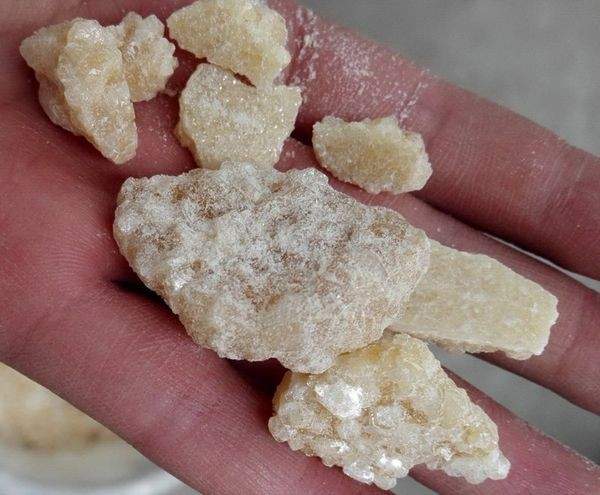Introduction: Understanding Methiopropamine (MPA)
Methiopropamine (MPA) is a synthetic stimulant that first appeared on the drug market in 2010 as a “research chemical.” Structurally similar to methamphetamine, MPA belongs to the thiophene class and is primarily known for its stimulating and energizing effects. Unlike methamphetamine, MPA lacks an aromatic phenyl ring, which sets it apart chemically and pharmacologically.
Although marketed as a safer or “legal” alternative to controlled stimulants, MPA has not been approved for medical use or human consumption. Its recreational use raises significant health and safety concerns, making it crucial to understand its effects, risks, and legal status.
K2 Spice on Birthday Card
What is Methiopropamine (MPA)?
Methiopropamine is a thiophene-based analog of methamphetamine. While it shares similarities with amphetamine-class drugs, it does not function as a classic dopamine or norepinephrine releaser. Instead, MPA primarily acts as a selective norepinephrine-dopamine reuptake inhibitor (NDRI), influencing the central nervous system by increasing the availability of these neurotransmitters.
Key Characteristics
- Chemical Name: N-methyl-1-(thiophen-2-yl)propan-2-amine
- CAS Number: 801156-47-8
- Appearance: Typically sold as a white or off-white crystalline powder, MPA may also be available in capsules or tablets.
Effects of MPA
Recreational users report various effects from MPA use, including:
Short-Term Effects
- Euphoria: Users may experience a sense of heightened well-being and happiness.
- Increased Energy: Similar to other stimulants, MPA can boost alertness and physical activity.
- Mental Stimulation: Enhanced focus and cognitive performance are commonly reported.
- Reduced Appetite: Like many stimulants, MPA suppresses hunger.
Negative Effects
- Anxiety and Restlessness: High doses or prolonged use can lead to nervousness or agitation.
- Insomnia: Stimulant properties may disrupt sleep patterns.
- Tachycardia: Increased heart rate is a common side effect.
- Nausea and Dizziness: Some users report gastrointestinal discomfort and lightheadedness.
Risks and Long-Term Concerns
Although marketed as a “safer alternative,” MPA carries significant risks:
1. Cardiovascular Issues
Prolonged use can strain the heart, leading to increased blood pressure, arrhythmias, and potential long-term cardiovascular damage.
2. Psychological Dependence
MPA’s stimulating effects can lead to repeated use, resulting in tolerance, dependency, and withdrawal symptoms such as fatigue, depression, and irritability.
3. Lack of Research
There is limited scientific research on MPA’s long-term effects, toxicity, or safe dosage. This uncertainty increases the risks of adverse reactions and potential overdose.
4. Adulteration and Purity
Like many research chemicals, MPA purchased from unregulated markets may be contaminated with other substances, further increasing the risk of harm.
Legal Status of Methiopropamine
The legal status of MPA varies by country:
- United Kingdom: MPA was classified as a Class B drug in 2015, making its production, sale, and possession illegal.
- United States: MPA is not specifically scheduled at the federal level but may be regulated under analog laws, depending on state jurisdictions.
- European Union: Many countries have banned or restricted MPA as part of broader efforts to regulate new psychoactive substances (NPS).
Consumers must be aware of the legal risks associated with possessing or purchasing MPA.
high-quality research chemicals for sale online usa, canada, Australia and New Zealand
Safer Alternatives and Harm Reduction
For individuals seeking stimulants to improve focus, energy, or mood, there are safer and regulated options, including:
- Prescription Medications: Drugs like methylphenidate (Ritalin) or amphetamine salts (Adderall) are FDA-approved for ADHD and narcolepsy.
- Caffeine: A widely used and relatively safe stimulant found in coffee, tea, and supplements.
- Lifestyle Adjustments: Regular exercise, a balanced diet, and proper sleep can naturally enhance energy and focus.
For those who choose to use MPA despite its risks, harm reduction measures are crucial:
- Test substances with a reagent kit to verify purity.
- Avoid combining MPA with other stimulants or depressants.
- Start with a low dose and avoid redosing frequently.
- Stay hydrated and monitor physical and mental health closely.
Conclusion: The Uncertain Future of Methiopropamine
Methiopropamine (MPA) is a synthetic stimulant that has gained attention for its methamphetamine-like effects. While it may appear appealing as a legal or accessible alternative, its unknown long-term risks, high potential for abuse, and significant side effects make it a dangerous choice.
Education, harm reduction, and safer alternatives should guide individuals who seek stimulant effects. For those struggling with dependency or misuse, professional support is always recommended.
Methiopropamine, MPA, stimulant drugs, legal highs, synthetic stimulants, MPA effects, research chemicals


MPA is a psychostimulant that is used to treat ADHD. It is similar to amphetamine, but has a longer duration of action.
MPA? More like ‘My Pants Are Off’!
MPA is a Schedule II controlled substance in the United States. This means that it has a high potential for abuse and addiction.
Well, well, well. Look who’s talking about MPA. The pot calling the kettle black, I see.
I disagree with the author’s conclusion. I think MPA is a dangerous drug.
This is a great article! I learned a lot about MPA. Thanks for sharing!
Interesting article. I didn’t know that MPA was used to treat ADHD.
The use of MPA is legal in the United States with a prescription from a doctor.
MPA should be used with caution. It can cause side effects such as increased heart rate, blood pressure, and seizures.
Let’s not jump to conclusions. MPA can be a helpful medication for people with ADHD when used correctly.
This article is full of errors. The author clearly doesn’t know what they’re talking about.